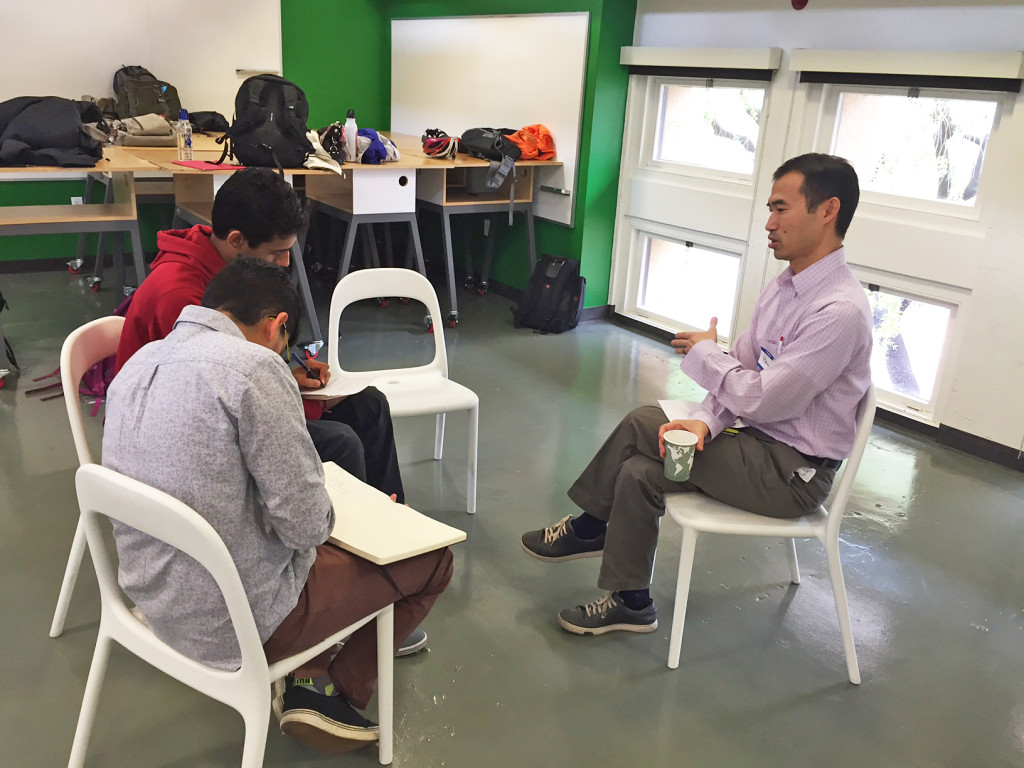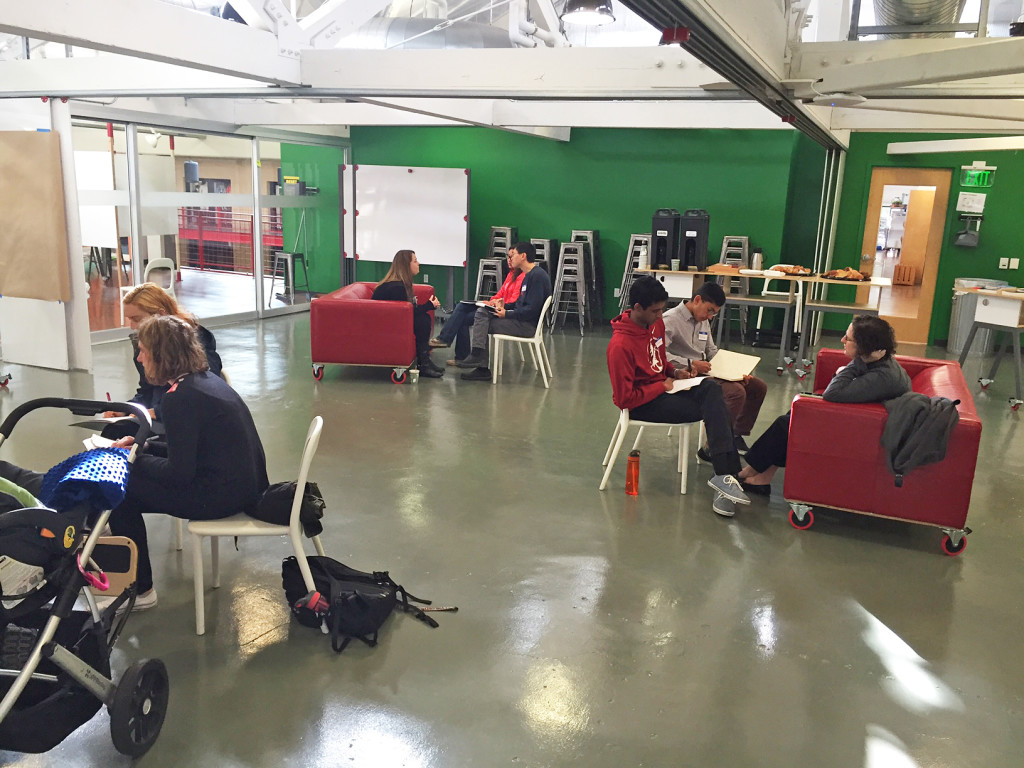Designing For Safety In Labor & Delivery started on 1/5/16 at the d. School. Last week we had our first “ethnography day” where we invited two OB/GYN doctors, a neonatologist (our instructor Dr. Henry Lee) and three newly delivered parents to be interviewed by the students. Students came to class having crafted their own open-ended interview questions.
Here are some of my favorite insights the students submitted as homework:
1. “Nobody prepares you for what happens postpartum physically”-parent
In the hospital the vast majority of time is focused on the current needs of the mother and child. Clinicians either do not have the time or do not prioritize communication about life after pregnancy to new moms including changes to the body and pain. While lactation specialists exist in hospitals they are sometimes unavailable or new parents may not know to ask for a consultation.
2. Neonatologist Henry Lee taught us about the various “teams” that exist for each delivery – for example, there may be two nurses, a pediatrician, and a obstetrician that assist with the delivery, but potentially an anesthesiologist, primary obstetric nurse, and extra nurse in case there is a need for a C-section operation. I was curious about how members of each team were divided or delegated, and Henry mentioned that sometimes communication may be slightly delayed because not everyone knows each other’s names in the delivery room. Not knowing everyone’s name raises obstacles in effective communication.
3. Regarding the EMR (EPIC) Inter-communication is nearly impossible, with staff being unable to copy/paste medical records from other facilities into their own patients’ profiles, adding time and frustration to a usually smooth and efficient process. More importantly, the system is detracting from the patient experience and the patient-faculty relationship because the nurse/clinician spends most of the time with his/her back to the patient, typing into the system (instead of listening intently and scribing in a paper chart). Furthermore privacy also seems to be an issue because the system is easily hack-able. One benefit is that it makes billing easier. Clearly this is an area for modification and development.
4. The OB’s best work day was described as one in which the room was set up and her tools were ready to go, and her worst work day was described as one in which the medications were not immediately available and instruments were not available for the pediatrician. Thus, reliability, cooperation, and efficiency in the room and workflow of clinicians are crucial.
5. A majority of the parents expressed very strong perspectives on how they wanted their birthing experience to progress. Their background research made them highly confident in their point of view and often reluctant to follow the advice of medical professionals when it deviated from their plans and perspectives. One of the clinicians described a recent situation with this this dynamic escalating to near death for the fetus before the patient relented and allowed the advised procedure (a c-section) to proceed.
6.) Mothers describe the white, cold, and practically lifeless rooms to be too “sterile” and “unwelcoming.” At the same time, usually all the mother can see is the ceiling, or the people immediately near them. An effort is required to design more inviting rooms for labor and delivery.
Click here to read all insights.



